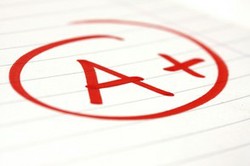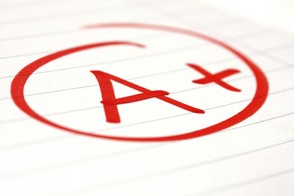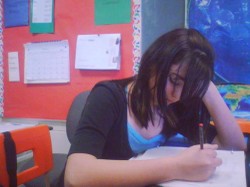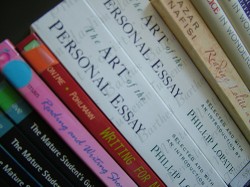
How to Write an Effective Reaction Paper
by Kushal
The reaction paper is one of the most common types of college writing. This article provides a look at the reaction paper - what it is and how you can write a great one.
Chances are you will be asked to write a number of reaction papers during your college career, and the sooner you learn how to create an effective one the better off you will be. In some ways a reaction paper is similar to a standard review of a product, a book, a piece of art or a movie, but there are some key differences as well.
One of the most important differences between a reaction paper and a standard review is that a reaction paper is written from the first person point of view. That means that the typical reaction paper will be peppered with phrases like "I believe" and "I thought."
It is important to keep in mind, however, that a reaction paper is still a review of sorts. That means that you will need to use the paper to assess the item you are talking about, whether that item is a new movie, a favorite book or a classic work of art. When preparing for the reaction paper, you should look at the book, movie or art as an objective observer, while also detailing your personal reactions to it.
Before you can write your reaction paper, you will need to carefully read the book or look at the piece of art you will be reacting to. Thoroughly assessing the object of the reaction paper is essential, and it is often helpful to reread the source book or observed the work of art a second time, stopping to reflect not only on the quality of the piece but on your personal visceral reaction to it.
The next step in the process is taking notes and recording your thoughts about the work of art, book or other item you have just read or observed. This is a critical step, since it will form the core of the reaction paper.
After you have recorded your thoughts in detail, you will need to develop a thesis for the reaction paper. Developing this thesis is a critical step, since it will help you flesh out the reaction paper and give it a uniquely personal twist. After the thesis has been developed, you can move on to the final two steps— creating your outline and constructing the reaction paper itself.
After you have developed an outline for the reaction paper, it is important to get the paper off to the right start. The introductory sentence is a critical first step, and it should contain the name of the artwork or book you are reviewing, along with your own name.
The first parawaph should include an introduction to the work you are reviewing, along with notes about how you felt about it and how you responded to the experience of viewing or reading it. Keep in mind that the reaction paper should include your personal opinions, so you should not be shy about expressing your opinions about the piece. Phrases like "I believe" and "I feel" are common in reaction papers, so do not hesitate to talk about your own feelings about the subject of the paper.
Nearly any type of work, from a classic novel to a blockbuster movie, can form the basis of a compelling reaction paper. In some cases your professor will assign you a particular book, play or work of art. In other cases you will be free to choose your own subject. No matter what the case, the key is to focus not only on the work itself but your reaction to it.
A good reaction paper will naturally include your personal opinions about the work being reviewed, so you should include a good variety of phrases designed to convey your personal opinion. Some typical phrases you can use to craft a great reaction paper include:
ln my opinion
l feel that
This author feels
l liked
l did not like
Words seemed to
I was moved by
l did not understand how
lt is clear the author meant
My favorite part of the book was
After you have outlined and written your reaction paper, it is a good idea to reread the entire thing, preferably out loud. Reading the paper out loud will help you catch not only obvious misspellings and grammatical errors but problems with awkward phrasing, repetitiveness and wordiness.
It is also a good idea to go back and review the source material after you have concluded your reaction paper. Rereading parts of the book, or watching key sections of the film a second time, can provide you with new insights, and new reactions to include in your paper. The more invested you are in the subject of the reaction paper, the more compelling that paper will be to the reader.
You might also like
How to Study (In Five Easy Tips)Knowledge is just a process of information going in, being understood and com...
How to Write an EssayWriting an essay, whether at school, college or university, need not be daunt...
Top 10 Ways To Pay For Your Child's EducationWhether you are paying for a college, a vocational school, or an online educa...




 Fun Facts About the Rubik’s Cubeon 05/02/2012
Fun Facts About the Rubik’s Cubeon 05/02/2012
 Designs for Small Spaces – Create a Cozy French Kitchenon 05/02/2012
Designs for Small Spaces – Create a Cozy French Kitchenon 05/02/2012
 Internet Safety – Some Important Warning Signs for Parentson 05/02/2012
Internet Safety – Some Important Warning Signs for Parentson 05/02/2012
 Internet Safety – What to Do if You Suspect Your Child Is Involved With an Online Predatoron 05/01/2012
Internet Safety – What to Do if You Suspect Your Child Is Involved With an Online Predatoron 05/01/2012



Comments